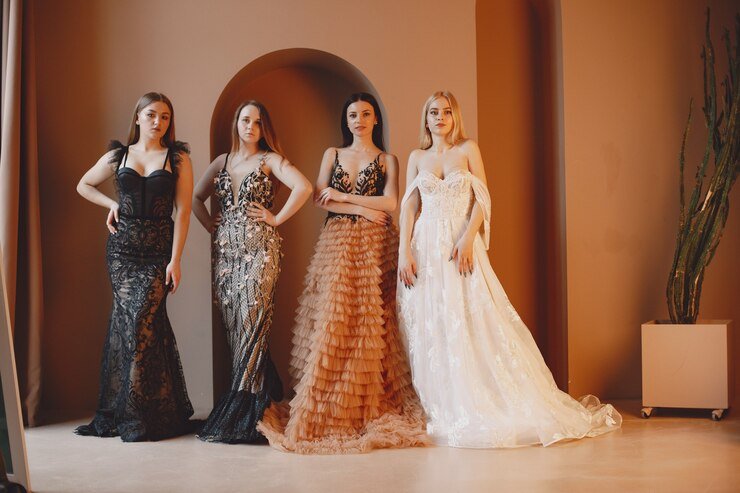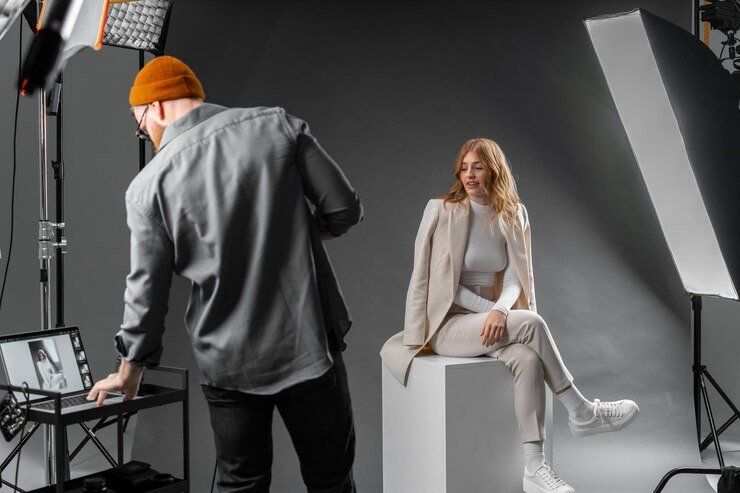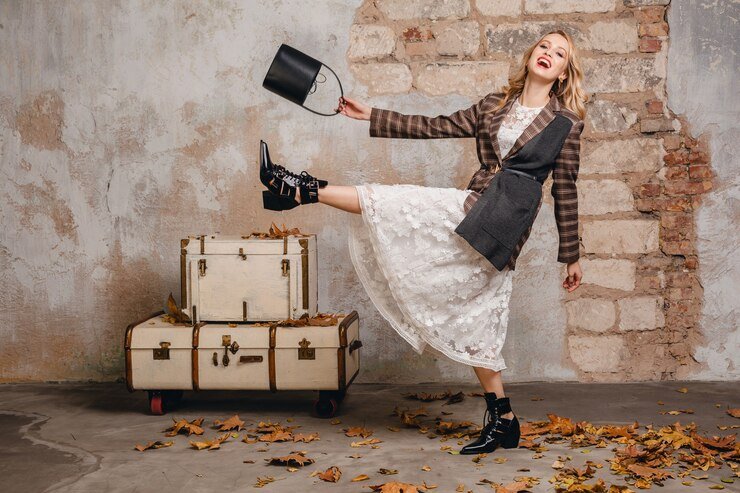
Introduction to the Met Gala
The Met Gala, often dubbed the “Super Bowl of Fashion,” is an annual spectacle that captivates audiences around the globe. This exclusive event not only serves as a fundraising gala for the Metropolitan Museum of Art’s Costume Institute but also showcases some of the most daring and extravagant designs in fashion history. From Hollywood A-listers to avant-garde designers, everyone strives to make a statement on this iconic red carpet.
Every year, a unique theme sets the stage for creativity and self-expression. The resulting outfits are more than just clothing; they often blur the lines between art and fashion, leaving us awestruck or even bewildered. As we take a journey through time, let’s explore how met gala fashion has evolved over the years—shifting from understated elegance to bold proclamations that challenge societal norms and push creative boundaries.
The Early Years (1948-1980)
The Met Gala, originally known as the Costume Institute Gala, began in 1948. It was a modest fundraiser for the museum’s costume department.
During these early years, fashion was decidedly conservative. Designers like Dior and Balenciaga paved the way with their elegant silhouettes. Evening gowns dominated the scene, showcasing classic styles that reflected post-war optimism.
Attendees were primarily from high society or influential circles. Celebrities were not yet front and center; instead, it was about art and culture mingling with fashion.
Dresses often featured intricate detailing—lace overlays or pearls enhancing timeless fabric choices. Each outfit told a story of elegance without overwhelming flair.
This era laid the groundwork for what would become one of fashion’s most anticipated events in history. The foundation had been set for future creativity to flourish on this iconic red carpet.
The Golden Age (1981-1995)
The Golden Age of Met Gala fashion marked a transformative period. Designers began to push boundaries, creating unforgettable looks that still resonate today.
During the 1980s and early 90s, bold colors and extravagant silhouettes took center stage. Think shoulder pads, dramatic gowns, and an audacious flair for the theatrical. Fashion icons like Grace Jones and Madonna became synonymous with this era’s daring style choices.
Chanel’s Karl Lagerfeld dazzled as he brought his unique vision to the red carpet. His designs encapsulated glamour while intertwining art and culture in surprising ways.
This was also a time when celebrities embraced their roles as fashion influencers. The Met Gala shifted from a niche event to a must-watch spectacle for millions around the globe.
As styles evolved, so did public perception of high fashion itself—becoming more accessible yet ever more aspirational at once.
The Rise of Celebrities and Designers (1996-2009)
The late ’90s and early 2000s marked a significant shift in Met Gala fashion. This was the era when celebrities became central figures, elevating the event’s profile to unprecedented heights.
Designers began collaborating closely with stars, leading to some unforgettable moments on the red carpet. Think of iconic pairings like Sarah Jessica Parker and John Galliano or Jennifer Lopez’s jaw-dropping Versace dress that sparked a global trend for plunging necklines.
As more A-listers attended, the event transformed into a showcase of extravagant creativity. Vogue editor Anna Wintour played a crucial role in this evolution, emphasizing both glamour and artistry.
Fashion houses started investing heavily in their celebrity ambassadors, turning the Met Gala into an essential platform for brand visibility. The lines between high fashion and pop culture blurred magnificently during these years. Each year brought new excitement as audiences eagerly anticipated what stunning looks would emerge from this elite gathering.
Themes and Iconic Moments (2010-present)
The Met Gala has flourished into a vibrant tapestry of themes since 2010, captivating audiences worldwide. Each year brings a fresh narrative, drawing inspiration from art, culture, and history.
In 2015, “China: Through the Looking Glass” highlighted the allure of Chinese aesthetics in fashion. Celebrities showcased intricate designs that celebrated Eastern heritage while igniting conversations around cultural appreciation versus appropriation.
The following year’s theme, “Manus x Machina: Fashion in an Age of Technology,” blurred lines between handmade artistry and machine innovation. Stars donned futuristic looks that merged tradition with modernity.
One unforgettable moment came in 2019 when Billy Porter made a stunning entrance draped as an Egyptian sun god. The visual spectacle was both theatrical and groundbreaking.
These themes have not only transformed red carpet expectations but also challenged designers to push boundaries within their craft each year at this iconic event.
Controversial Outfits and Memorable Red Carpet Looks
Controversial outfits have become a hallmark of Met Gala fashion. They spark conversations and challenge the status quo. Who can forget Rihanna’s bold yellow gown in 2015, resembling a stunning interpretation of the Pope’s attire? It stirred debates about religion and fashion.
Then there was Billy Porter in 2019, gracefully strutting down the red carpet donned in an extravagant tuxedo dress that blurred gender lines. His look celebrated inclusivity while turning heads globally.
Lady Gaga has also made her mark with daring ensembles. Her four-outfit reveal in 2019 showcased not only her commitment to performance art but also pushed boundaries regarding femininity and self-expression.
Each year brings new surprises that ignite discussions across social media platforms. These memorable moments resonate beyond mere fabric; they question societal norms and redefine what it means to be fashionable at such a prestigious event.
Impact on Fashion Trends and Pop Culture
The Met Gala has long served as a barometer for fashion trends, influencing styles seen on runways and in stores. Designers often use this high-profile event to unveil their most daring creations, capturing the attention of both critics and fans alike.
When celebrities step onto that iconic red carpet, they set off ripples across pop culture. Outfits from past years have sparked conversations about identity, cultural representation, and artistic expression.
Fashion enthusiasts eagerly await each year’s themes for inspiration. The bold looks often filter down into mainstream fashion trends almost immediately.
From avant-garde silhouettes to reinterpretations of historical costumes, the impact is undeniable. Social media amplifies these effects—every striking outfit becomes part of the digital dialogue surrounding contemporary style choices. This interplay between celebrity culture and fashion continues to shape what we wear today.
Iconic Themes and Memorable Moments
The Met Gala is renowned for its unique themes, each year inviting attendees to interpret fashion in imaginative ways. From “Camp: Notes on Fashion” in 2019 to “Heavenly Bodies: Fashion and the Catholic Imagination” in 2018, these themes often spark intense creativity.
Memorable moments have defined this event throughout the years. Who could forget Rihanna’s breathtaking yellow gown at “China: Through the Looking Glass” or Billy Porter’s stunning entrance carried by six shirtless men?
These instances are not just about garments; they tell stories and push boundaries within fashion. The interplay of art and personal expression shines through every ensemble.
Each theme creates an opportunity for designers and celebrities alike to showcase their vision, making it a platform where imagination knows no limits. It transforms how we view both fashion and culture, leaving lasting impressions that resonate beyond the red carpet.
The Influence of Social Media on Met Gala Fashion
Social media has transformed the way we experience Met Gala fashion. Platforms like Instagram and Twitter provide instant access to red carpet looks, allowing fans to engage in real-time.
Celebrities often showcase their outfits beforehand through sneak peeks or teasers, building anticipation. This creates a dialogue around the ensembles long before they hit the steps of the Metropolitan Museum of Art.
The rise of influencers has also played a significant role. They bring fresh perspectives and styles that resonate with younger audiences, shaping trends and sparking discussions about what “Met Gala fashion” truly means today.
Moreover, hashtags such as #MetGala2023 trend globally within moments. This amplifies visibility for designers while giving attendees an opportunity to express their creativity beyond traditional media coverage.
In this digital age, every detail—from fabric choices to accessory selections—becomes part of an ongoing conversation that defines modern Met Gala culture.
Looking Ahead: What Can We Expect from Future Met Galas?
As the Met Gala continues to evolve, future events promise even more excitement. We can expect to witness a fusion of technology and fashion. Virtual reality elements could enhance the experience for both attendees and viewers at home.
Sustainability is likely to take center stage too. Designers may focus on eco-friendly materials, reflecting a growing global consciousness about environmental impact.
Moreover, diversity in representation will probably become even more pronounced. The red carpet might showcase emerging talents from various backgrounds, bringing fresh perspectives to high fashion.
Themes could push boundaries further than ever before. Expect daring concepts that challenge norms and ignite conversation among guests and audiences alike.
Fashion collaborations between unexpected pairs—designers with artists or musicians—could lead to unforgettable ensembles that redefine style standards in real-time on the red carpet.
Conclusion
The Met Gala has undeniably evolved into a cultural phenomenon, shaping the landscape of fashion and pop culture. From its modest beginnings in 1948 to today’s extravagant displays of creativity and artistry, met gala fashion continues to capture the imagination.
Each year brings new themes that challenge designers and attendees alike. The event is not just a showcase for high fashion but also a reflection of societal trends and issues. As celebrities don their most daring looks on the red carpet, they spark conversations that resonate beyond just style.
With social media amplifying every moment from this grand affair, fans worldwide can engage with the spectacle like never before. Tomorrow’s Met Galas will likely push boundaries even further as both emerging talents and established icons seek to make their mark.
What lies ahead for met gala fashion? The possibilities are endless. Each iteration promises fresh ideas while paying homage to past inspirations. One thing remains certain: we can’t wait to see what magical creations await us next year at this iconic celebration of art and style!
RELATED POSTS
View all


